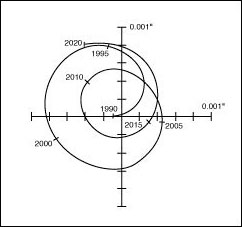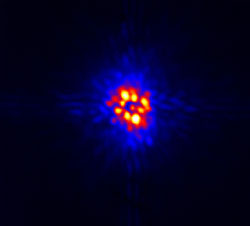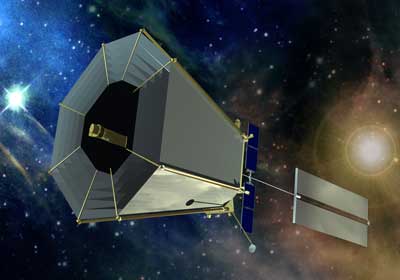The actual paper authors were more reserved, though astronomy is far bolder than biology in terms of its participants hyping findings and generally physics is pretty reserved (exception: LHC claims when it was being funded and built - now that the marketing is over, the call for perspective has set in) outside dark matter and dark energy, where anything goes.
So some understanding of what 'finding' a planet means is needed because virtually every paper released has graphics, artist conceptions if necessary, and that can confuse the issue on what a planet discovery does and does not mean.
How to find a planet - the short version
The thing most people don't recognize is astronomers don't see planets around other stars - they're too far away and emit no light, which means the light from their stars obscures them.
1. Astrometrics: Tiny displacements of distant stars can be measured, just like Earth and the other planets in our solar system have this effect on the Sun. It can tell us mass but not size.

Astrometric displacement of our Sun caused by Jupiter as at it seem if observed from 33 light-years away. Credit: NASA
2. Doppler Shift: Radial velocity is how the first exoplanet around the star 51 Pegasi back in 1995. It also caused considerable hype. Radial velocity is also how Gliese 581g was found more recently. Radial velocity measures changes in a star's velocity and astronomers detect variances by analyzing the spectrum of light - light waves from a star moving away from us shift toward the red end of the spectrum but light waves from a star moving toward us shift to blue.
3. Transit Method: When a planet passes directly between a star and us, it blocks out light, reducing its apparent brightness and we can detect that. Unlike doppler shift and astrometrics, the transit method tells us size but not mass.
4. Gravitational Microlensing: Gravity bends space, professor Einstein showed us, and if space is bent then light rays will be also. When a planet passes in front of a star in our line of sight, that planet's gravity will 'behave' like a lens and cause an increase in brightness.
Why mention all that? Well, Gliese 581g is certainly inferred to be Earth-like, 3-4X our mass, they wrote in their arXiv paper but without seeing it how big is that? If it's just rock, like our Moon, it may be twice our diameter, but as astronomer Steve Vogt of the U.C. Santa Cruz told TIME's Michael D. Lemonick, "if it's made of marshmallow cream and cherry nougat, it's a lot bigger."
Vogt, co-author of the discovery paper, is also the one who set off the "almost 100% sure" hysteria that Gliese 581g had life on it, despite having no idea what the planet is composed of, so stick with astronomers to find planets, not determine the implications.
So what can help?
The coronagraph was invented in 1930 by Lyot to study the Sun's corona without need for an eclipse - it basically blocks light coming from the sun itself in order to see the extremely faint emissions from the corona.

55 Cancri image made with the Lyot Project coronagraph: possibly one of the highest quality stellar images ever made. Credit: American Museum of Natural History
Interferometry is replacing one larger telescope mirror with smaller ones and combining their light. Interferometers are good at sorting out which light waves come from which part of the star system and it can be tuned so that the light coming from the exact center of the field of view, where the star is, will be blanked out ('nulled'), while the light from other areas will be viewable.
What about the future?
The Terrestrial Planet Finder was proposed by NASA in 2002 and accepted in 2004. One part of its spec was for a Visible Light Coronagraph, with a mirror three to four times bigger and 100 times more precise than the Hubble Space Telescope, which would collect starlight and then use special optics to reduce the starlight by a factor of one billion, enabling astronomers to better detect faint planets, but after the 2006 elections when Congress changed majority parties, this project was postponed indefinitely (see also Goodbye Constellation, Hello ... Baracket?)

Terrestrial Planet Finder Coronagraph concept. Credit: NASA




Comments